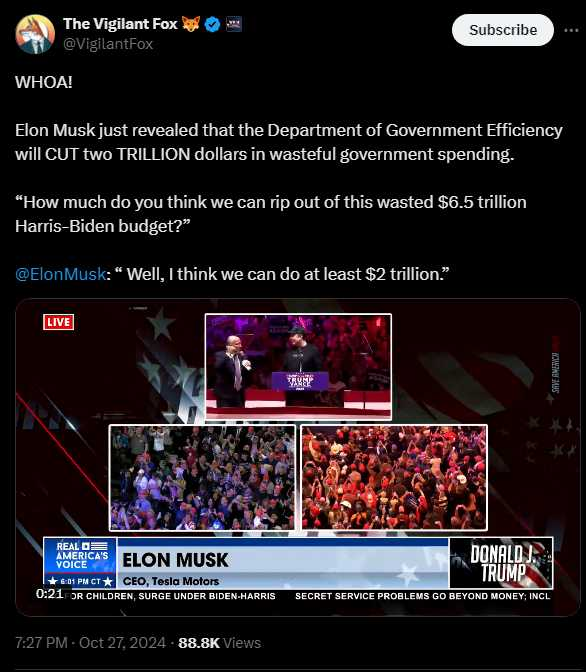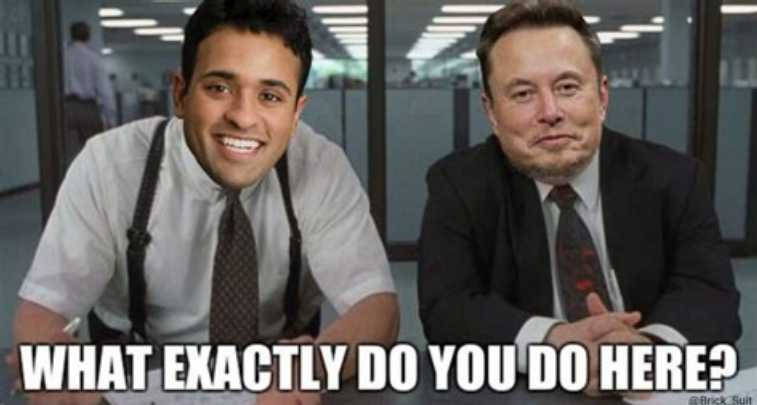The federal government spends enormous amounts of taxpayer money on programs riddled with inefficiency, redundancy, and waste. As Elon Musk and others have pointed out, significant cuts are not only possible—they're long overdue. A modern equivalent to the 1980s Grace Commission findings, adjusted for inflation, suggests we could cut $2 trillion. Here's how we can get there:
1. Eliminate Redundant Federal Agencies & Programs
The U.S. has numerous overlapping programs across different departments. Streamlining or merging these entities could save significant amounts.
- Overlapping Programs: Consolidate functions where possible within the Department of Agriculture, HUD, and Health and Human Services to avoid duplication.
- Departmental Mergers: Consider merging offices with overlapping missions and responsibilities to increase efficiency.
Estimated Savings: $200-300 billion over a decade.
2. Cut Wasteful Defense Spending
Oversight of defense contracts and the elimination of outdated or unnecessary military projects could yield significant savings.
- Outdated Projects: Eliminate costly weapons systems that are no longer necessary or have been proven ineffective.
- Cost-Control Measures: Implement stricter audits and cost management for defense contracts to prevent overspending.
Estimated Savings: $300-400 billion.
3. Reform Medicare & Medicaid Without Cutting Core Services
Implementing reforms to make these programs more efficient can yield major savings without harming beneficiaries.
- Fraud Controls: Strengthen fraud prevention measures to reduce waste.
- Drug Pricing: Negotiate better prescription drug prices and enhance competition.
- State-Level Flexibility: Allow more innovation at the state level to manage Medicaid more efficiently.
- Preventive Care: Incentivize preventive healthcare to lower long-term costs.
Estimated Savings: $500-600 billion over a decade.
4. Privatization and Outsourcing Where Effective
Privatizing certain government functions can reduce costs while maintaining or improving service quality.
- Outsource Infrastructure Management: Use private management for infrastructure projects where feasible.
- Amtrak: Consider privatizing or partially privatizing Amtrak to reduce the financial burden on taxpayers.
Estimated Savings: $100-200 billion.
5. End or Limit Foreign Aid to Non-Critical Programs
Reassess foreign aid spending and focus only on security-critical or strategically important partnerships.
- Strategic Reassessment: Prioritize foreign aid for nations that directly contribute to U.S. security and economic interests.
- Non-Essential Programs: Cut or limit aid to countries and programs that are not critical.
Estimated Savings: $50-100 billion.
6. Government Property and Building Maintenance
Underused or inefficiently managed government properties can be sold or repurposed to save billions.
- Sell Underused Properties: Identify and sell federal buildings and land that are not being utilized.
- Repurpose Where Necessary: Repurpose buildings for state or local needs to reduce maintenance costs.
Estimated Savings: $100 billion.
7. Reduce Bureaucratic Costs in Departments Like Education
The Department of Education has grown significantly, but educational outcomes remain stagnant.
- Downsize Federal Role: Transfer more educational oversight back to states and reduce federal administrative costs.
- Efficiency Audits: Conduct thorough audits to find and eliminate wasteful spending.
Estimated Savings: $50-75 billion.
8. Fraud and Mismanagement Reduction Initiatives
Preventing fraud and managing benefits programs more effectively could save substantial amounts.
- Technology Investment: Use advanced data analysis and AI to detect and prevent improper payments.
- Enhanced Oversight: Increase oversight in Social Security and Medicare to minimize fraud and abuse.
Estimated Savings: $300 billion.
Total Potential Savings: $2 Trillion Over a Decade
By addressing these areas with strategic reforms, we can achieve $2 trillion in savings while protecting essential services. This is not just a dream—it’s a realistic and achievable goal. With determined leadership and public support, the time to act is now.













